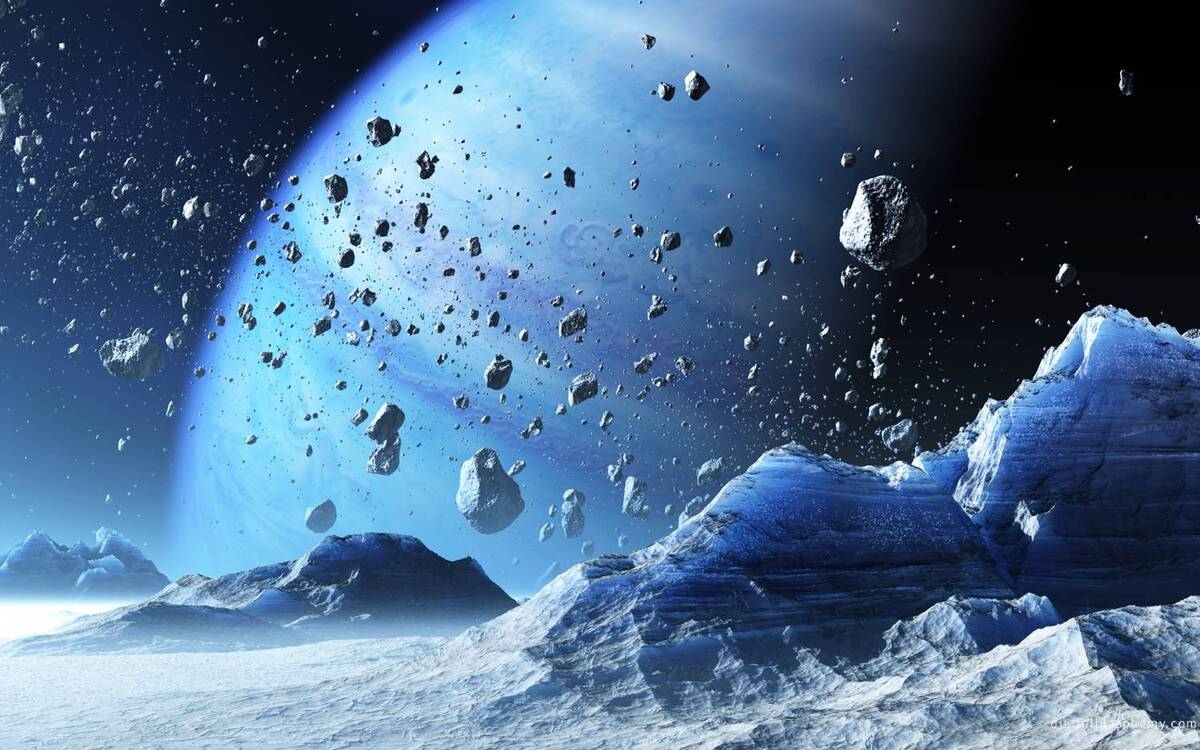Rocky Planets Might Have Been Able to Form in Early Universe

A stellar nursery in a neighboring galaxy has the right materials for such planet formation, the scientists reported in the journal Nature Astronomy.
The overall chemical makeup of the tiny galaxy, called the Small Magellanic Cloud, is akin to that of the early universe. The finding suggests that rocky planets might have been able to develop in the relatively pristine chemical environment that pervaded the cosmos just a couple billion years after the Big Bang.
The Small Magellanic Cloud is one of the Milky Way’s nearest galactic neighbors, though it’s very different from our galaxy. The tiny galaxy has a much lower abundance of heavy metal elements — such as iron, magnesium and aluminum — which are all crucial to the formation of rocky planets. This low-metal environment also mimics that of the early universe, an epoch before stars had enough time to forge the heavy elements and blow them out into space.
Because of the lack of these elements, astronomers have been unsure if rocky planets are able to form in the Small Magellanic Cloud. And previous telescopes did not have the ability to really probe young stars with a mass less than or equal to that of the sun, so astronomers couldn’t measure the star systems’ dust content, which is needed to infer if planets could be being born. But with the sensitivity of the James Webb Space Telescope, or JWST, astronomers can now gather more light and see smaller, fainter stars in greater detail (SN: 12/7/22).
Astrophysicist Olivia Jones and colleagues used an infrared camera on JWST to look at a region of the Small Magellanic Cloud called NGC 346, where young stars are forming. “It’s the first time ever we’ve really been able to look at how solar-size stars form in an environment akin to the early universe,” says Jones, of the Royal Observatory, Edinburgh.
The team detected signatures that suggest that lots of dust is orbiting and falling toward hundreds of stars in the region. As these dust grains orbit, they could begin to stick together and eventually accrete to create rocky planets.
“One of the things we would love to understand better is how the environmental context impacts star formation and then, later on, the planet-forming populations around those young, forming stars,” says Michael Meyer, an astronomer at the University of Michigan in Ann Arbor who was not involved in the research.
Because the Small Magellanic Cloud is the nearest example of a cosmic region with a much different chemical composition than the Milky Way, he says, it provides the first touchstone to study how star and planet formation depend on the stellar environment.
The low-metal stellar environment in the Small Magellanic Cloud is comparable to that of faraway galaxies that were developing around 11 billion years ago. During this time, a period called “cosmic noon,” there was a surge of star formation throughout the cosmos. If rocky planets could be accreting around stars in the Small Magellanic Cloud, the researchers suggest, such worlds could have been forming in the early years of the universe as well.
The young stars in NGC 346 are also relative lightweights. One reason scientists are interested in studying the possibility of planet formation around low-mass stars is because they are the most common type of stars in the universe and the longest-lived, says Penn State astronomer Kevin Luhman, who was not involved in the research.
“They offer the longest period of time in which life might form and survive on any planets around them,” Luhman says. “If the most common star in the universe lived for only a million years, then exploded, that would be kind of bad for life.” The fact that these types of stars can potentially form rocky planets, he says, is a good sign for life developing elsewhere in the universe.
Follow-up research will focus on determining what chemical signatures can be found developing around the stars, Jones says. This could clue the researchers in to what the chemical elements are that make up any rocky planets.
4155/v





















